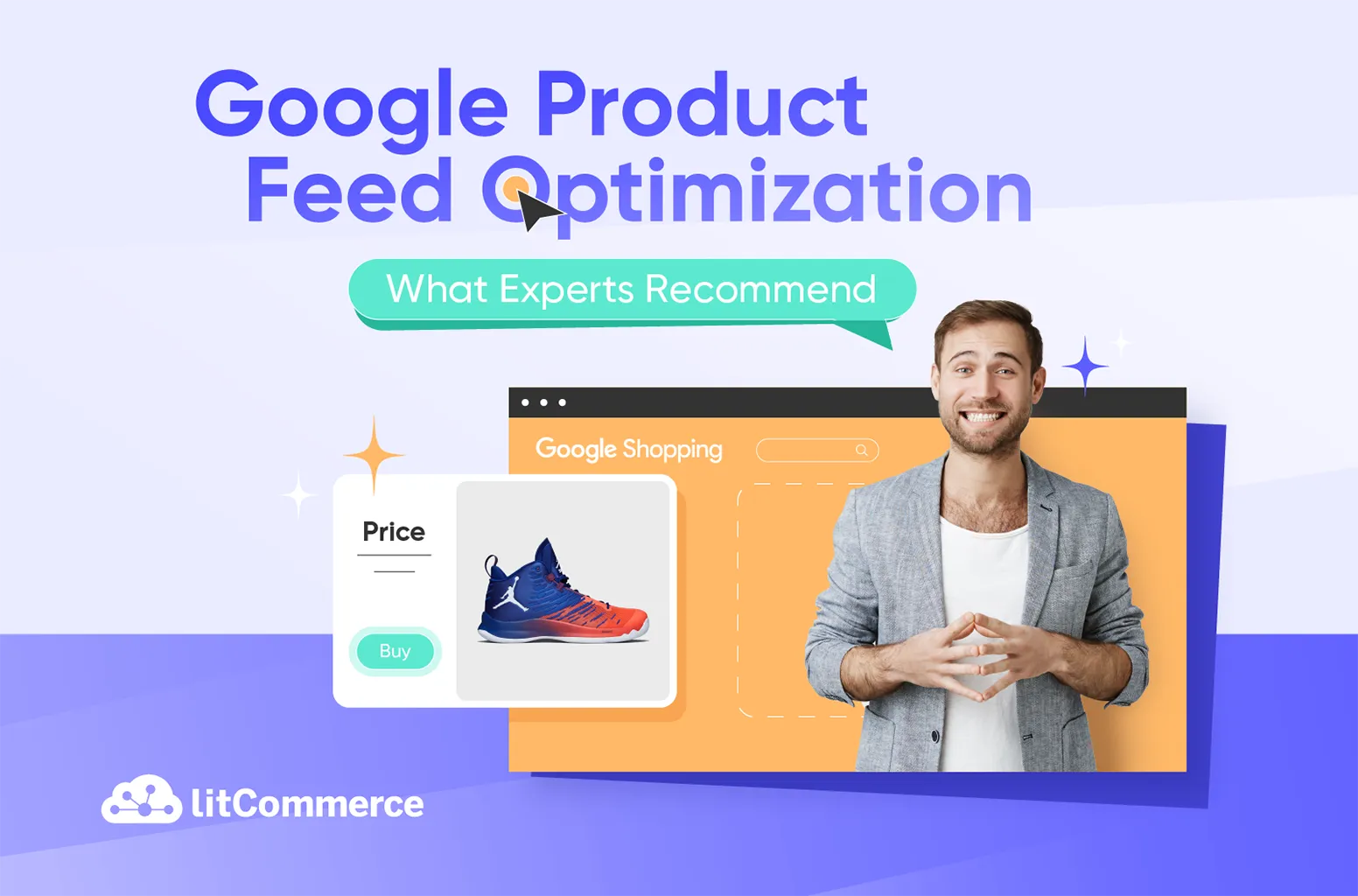Google Shopping ads are proving to be a game changer, as more than 40% of shoppers turn to Google to research before making a purchase. With millions of product listings competing for attention, Google Shopping feed optimization is more than important for any eCommerce seller looking to thrive.
Yet, many sellers continue to make common mistakes like incomplete data, poor title optimization, or incorrect categorization, often without realizing it. Consequently, they might miss out on great opportunities to showcase their products and reach more customers.
That’s where this article comes in! We offer expert tips to help you optimize Google product feed and maximize your profits, including:
- Optimize product IDs
- Optimize product title with use intent in mind
- Add GTINs for better visibility
- Perfect your product descriptions
- Use high-quality product images
- Implement dynamic repricing
- Keep shipping information updated
- Price it right
- Maximize sales and merchant promotions
- Monitor product performance regularly
- Optimize product category & subcategory fields
If you’re ready to make a big change, let’s dive right in!
Get Your Products Seen on Google Today!
Don’t let your products go unnoticed! A well-optimized Google Shopping Feed ensures your listings appear in front of shoppers actively searching for what you sell.
Why Google Shopping Feed Optimization Matters
Google Shopping feed optimization is all about looking at and improving the details in your product feed. It’s a tried-and-true strategy for online sellers, aimed at making your product listings rank in Google Shopping and your Google Shopping ads perform better.

When you’re running shopping campaigns, shopping feed optimization is vital. A well-optimized feed helps Google decide when and where to display your ads, ensuring they reach the right audience.
Here are 4 biggest reasons why you need to optimize Google shopping feed
- Increased visibility: An optimized feed helps Google match your products with relevant search queries. With accurate and detailed information provided, you can boost your chances of appearing in searches, driving more traffic to your products.
- Enhanced ads relevance: Customers are more likely to click on your ads and make a purchase when they are relevant to their intent. With product data optimization, you make it easier for shoppers to find what they want and one step ahead of the competition.
- Better click-through rates (CTR) and conversions: Google Shopping feed optimization with eye-catching images, clear descriptions, and compelling titles will draw users in and encourage them to explore your products. And this seamless shopping experience will lead to higher CTR and conversions.
- Cost efficiency: As you target users likely to convert, you can reduce wasted ad spending and improve your ROI (return on investment). Also, a higher CTR (click-through rate) can lower your CPC (cost per click).
Key Elements of a Successful Product Feed
Now that you see the importance of Google Shopping feed optimization. So, which are the key elements you should pay attention to during this process?
The table below provides you with a detailed breakdown of the key elements to focus on:
Definition | Purpose | |
Product ID | ‣ A unique identifier for each product | ‣ Google uses the Product ID to track and manage the product across ads, search results, and comparison shopping services |
Product title | ‣ The name of the product to be displayed | ‣ Appears in ads and search results to attract users’ attention |
Product description | ‣ A detailed description of your product, up to 5,000 characters | ‣ Provides context and important product information to potential buyers |
Product category | ‣ Categorization based on Google’s predefined taxonomy | ‣ Helps Google classify your product and display it in relevant searches |
Product price | ‣ The cost of the products in the local currency | ‣ Displays the price to potential customers and determines eligibility for certain Shopping ads |
Link to product page | ‣ A direct link to the product’s landing page | ‣ Directs users from the ad to the product’s specific page |
Image link | ‣ The URL of the product’s main image | ‣ Displays the product visually in ads and search results |
Availability | ‣ Specifies whether the product is in stock, out of stock, or available for pre-order | ‣ Helps Google show accurate product status in ads and search results |
GTIN (Global Trade Item Number) | ‣ A unique identifier (UPC, EAN, or ISBN) for products, commonly used for retail barcodes | ‣ Helps Google match products across different sellers and improve visibility |
Expert Tips for Google Shopping Feed Optimization
We’ve examined and tested Google Shopping feed optimization for over 100 products, and we’ve discovered expert tips that can help you fine-tune your feed.
1. Optimize product IDs
Many sellers overlook their product IDs and end up creating random IDs without any specific guidelines. But a unique product ID is like a fingerprint for each of your items in Google Shopping as it helps Google differentiate and track your products in a sea of listings.
To optimize your product ID, you should:
- Keep it consistent: Use a static, unchanging ID for each product, even if you update things like the title, price, or description. Hence, it’ll allow Google to keep track of your product over time while avoiding confusion.
- Make it unique: Each product should have a distinct ID that isn’t shared with any other product so that Google can identify your product properly and match it with similar listings across the web.
- Ensure it’s globally unique: If your business operates internationally or across different markets, make sure your product IDs don’t overlap across regions. Use a globally unique ID to ensure that Google can accurately match your listings worldwide.
For example, FitGear assigns unique product IDs for every variant of their products, including differences in color, size, and style. In detail, their “FitGear Performance Running Shoes” in size 8 and red would have a product ID like “FG-PR-001-RED-08”.
2. Optimize product title with user intent in mind
One common mistake sellers make is not paying enough attention to the structure of their titles, leading to important information getting lost or overlooked.
To optimize your product titles with a focus on user intent, first, think about how consumers search for products.
Here are some tips to keep in mind:
- Be keyword-smart: Place the most relevant keywords at the beginning of your title. This helps ensure that your product is found easily and avoids truncation in search results.
- Avoid fluff: Stick to the facts. Skip overly promotional language and focus on the specifics that users are actively searching for. This approach resonates better with potential customers.
- Be consistent: Ensure that your product titles are aligned with your website listings. Consistency helps prevent confusion and builds trust with your audience.
An example of Google Shopping feed optimization with a great title for running shoes might be “FitGear Men’s Performance Running Shoes – Lightweight, Red, Size 10.” It includes essential details like gender, purpose (running shoes), and product specifics (lightweight, color, size).
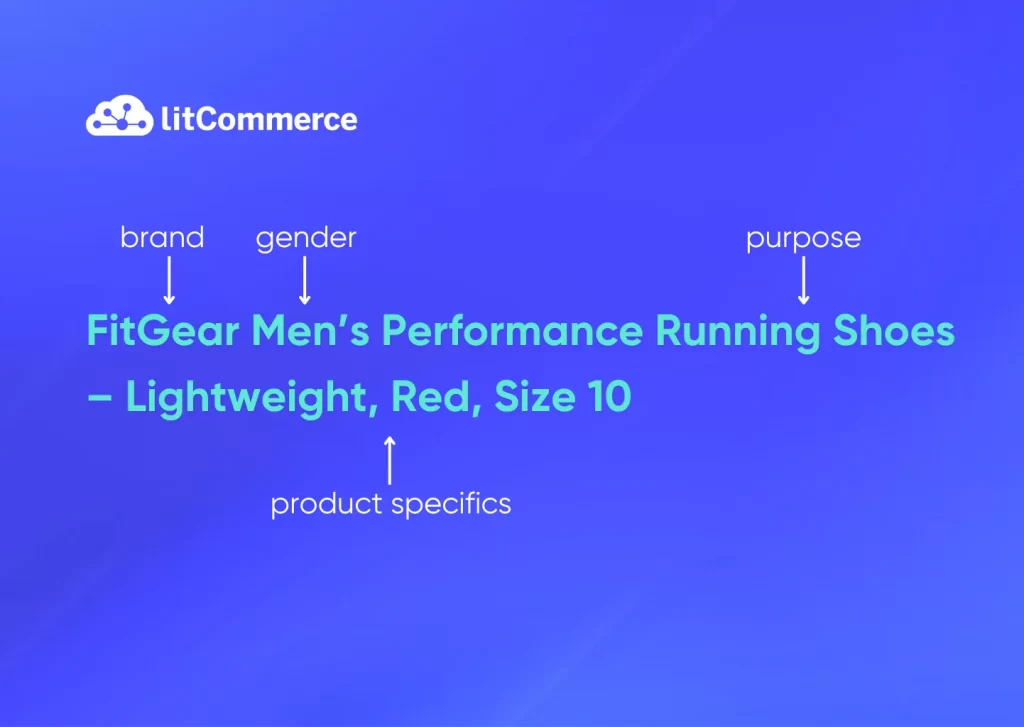
This format ensures that the most relevant details catch the eye of potential buyers right away.
3. Add GTINs for better visibility
GTIN, or Global Trade Item Number, is an attribute Google requires for all products with a known identifier. Without GTIN, Google may have a harder time accurately categorizing and matching your offers to relevant searches.
Thus, if your product has a GTIN, don’t forget to add it to your feed. Including the GTIN in the required format not only improves the chances of your product being found but also enhances its visibility when shoppers are searching for specific items.
What’s more, using GTINs allows your products to be displayed alongside those of your competitors. Thanks to this, potential customers can easily see how your product stacks up against similar offerings in the market, ultimately encouraging them to choose yours.
Remember, providing accurate and complete information is key. Ensure that your GTINs are entered correctly and match the specifications set by Google. By doing so, you’ll be taking a significant step towards increasing your product’s visibility and attracting more customers.
4. Perfect your product descriptions
For starters, a strong product description can significantly boost your sales. When customers feel informed and connected to your product, they’re more likely to purchase. Think of it as your sales pitch – just like a salesperson, it guides customers through their buying decision.
Also, well-crafted product descriptions can improve your search engine rankings. As more people discover your site, you’ll see increased visitors and sales.
On the flip side, if your product descriptions are unclear or poorly written, then that can affect both your sales and return rates. A bad description can’t tell the buyer what they need to know, so they may turn away from your site, including:
- Poor grammar and typos
- Insufficient information
- Targeting the wrong audience
- Using generic manufacturer descriptions
- Walls of text
- Focusing too much on features rather than benefits
When putting together a good product description, there are a lot of things to think about. Here are a few tips on getting started:
- Know your audience: Understand who your typical customers are. Create a buyer persona to tailor your language and tone. Whether casual or formal, match your style to their expectations.
- Highlight benefits & features: Focus on both the features and the benefits of the product. Use positive adjectives to enhance appeal. For example, describe the product as having an “elegant design” and “remarkable performance.”
- Make it easy to read: Use bullet points for clarity. Highlight key features and benefits succinctly. Remember, many customers skim through descriptions, so make it easy for them to catch the essentials.
- Optimize for SEO: Integrate relevant keywords naturally into your descriptions. This will help improve your search rankings and attract more visitors.
Below is an example of a good product description from Nike you can learn from:
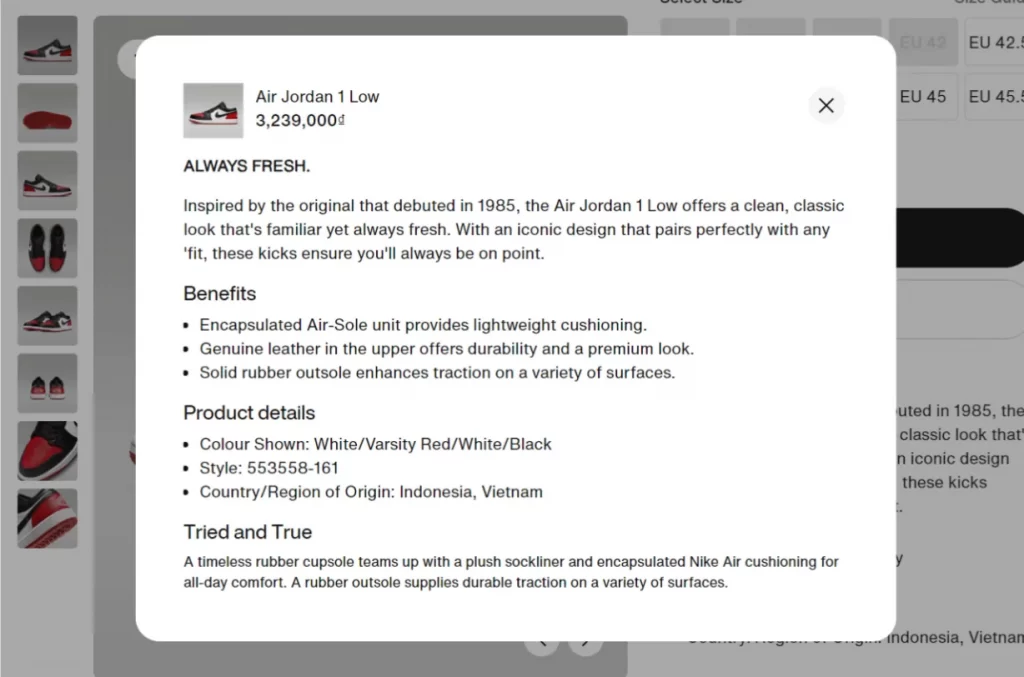
5. Use high-quality product images
Before making a purchase, customers want to see what a product really looks like. In fact, high-quality product photos can boost conversions by 94% compared to low-quality ones.
Simply having high-resolution images isn’t enough, they must also be sharp and detailed. Even if your original photo has great pixel density, it can still have issues like:
- Lack of sharpness and clarity
- Color and saturation problems
- Brightness and contrast issues
- Unwanted objects in the frame
- Scratches, dust, or spots
Remember, a good product image helps customers make informed buying decisions. It should be clear, well-lit, and showcase the product from multiple angles without distractions.
Make sure your product images are high-resolution, clear, and look great on any screen. You should think of using a high-resolution camera to capture sharp, bright photos. Blurry or dark images can turn potential buyers away.
Also, less is more. Focus on the product, and if props are necessary, keep them subtle. Customers should easily see what they’re buying, otherwise, they might get frustrated and shop elsewhere.
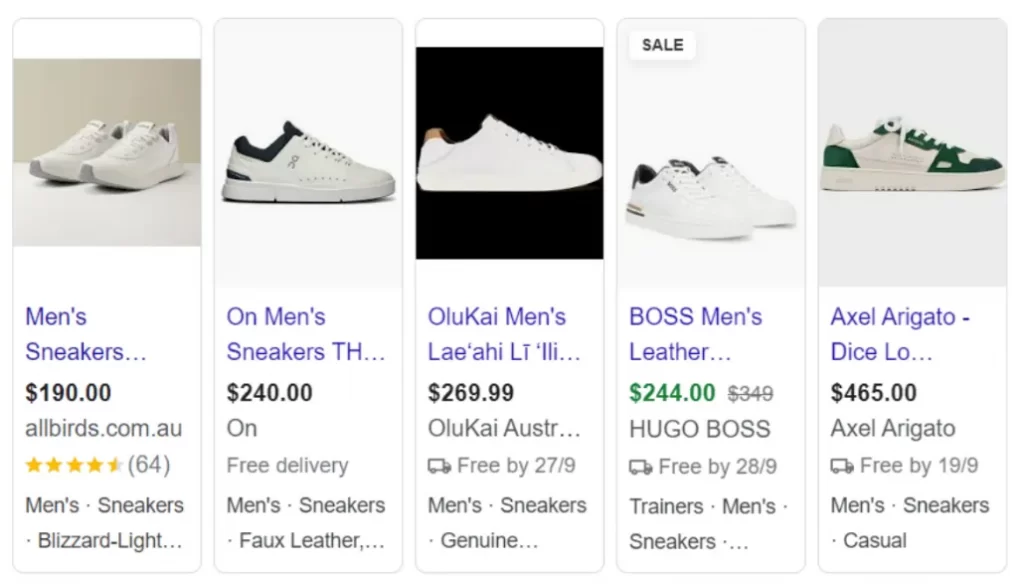
6. Implement dynamic repricing
Generally speaking, dynamic repricing actively adjusts market changes and customer behavior. You can find the best price points for different audience segments as you analyze data on these factors. This flexibility allows you to maximize profits during peak times while staying competitive during slower periods.
Here are some tips you can follow to position your products effectively and justify your prices:
- Assess the competitive landscape: To determine if dynamic repricing is right for your business, you should analyze your market and competitors’ pricing strategies first.
- Embrace the right technology: You should also ensure your systems can handle accurate data collection and real-time adjustments, and be ready to upgrade or integrate as needed.
- Consider legal and ethical factors: Don’t forget about the legal and ethical aspects of dynamic pricing. Complying with regulations on fair competition and avoiding discriminatory practices is vital to prevent negative backlash or legal issues.
More Sales with LitCommerce Google Shopping Feed
Get your products in front of more shoppers with LitCommerce Google Shopping Feed. Easily manage and optimize your listings to maximize sales.
7. Keep shipping information updated
When it comes to great delivery experiences, many sellers often focus on speed. But real-time tracking is just as important, with 90% of customers willing to trade fast delivery for better tracking.
Without clear updates or honesty about delays, customer satisfaction might drop, leading to bad reviews, lost sales, and a shift to your competitors.
That’s why keeping shipping information updated is really important when thinking about Google Shopping feed optimization:
- Be transparent early: Start tracking as soon as possible – during the pick, pack, and ship stages. Key updates should include when the order is received, packed, picked up by the carrier, and delivered.
- Use real-time tracking: Real-time tracking lets customers know where their package is at all times. You can share updates through email, text, or a custom tracking page.
- Be concerned about internal transparency: Clear internal tracking helps manage shipping rates and scale operations smoothly. So, delivery tracking should start right at order fulfillment for the best results.
8. Price it right
Imagine a customer clicking on your ad, excited to buy a product at a certain price, only to find a different price on your website. This mismatch not only frustrates the customer but also breaks their trust in your brand.
Moreover, when these prices don’t align, it can lead to disapprovals from platforms like Google, which can hurt your visibility and sales. That’s why it’s important to ensure that the price listed in your product feed matches what customers see on your landing page.
To keep your customers happy and maintain trust, always double-check that your product feed reflects the correct pricing.
9. Maximize sales and merchant promotions
If you want to make your ads stand out among numerous similar product listings and follow Google Shopping feed optimization, Google Merchant promotions is a powerful and effective marketing strategy that you can think of.
We’ll share our expert tips to make the most of merchant promotions:
- Highlight exclusive deals: Offering limited-time discounts or exclusive offers can attract more customers.
- Utilize free shipping: Free shipping is one of the top incentives for shoppers. If you offer it, don’t forget to include it in your promotions.
- Time your promotions well: Align your promotions with key sales periods like holidays or seasonal events to capitalize on higher search volumes.
10. Monitor product performance regularly
Another typical mistake sellers make is setting up their product feed and then forgetting about it. The challenge here is that eCommerce is dynamic, what worked last month might not work today. Without regularly monitoring performance, you risk missing out on valuable insights and losing sales.
Here’s how to stay on top of it:
- Track & tweak: Keep an eye on key metrics like CTR and conversion rate. If you notice a drop in performance, it’s time to adjust your strategy.
- Daily updates: Keep your feed updated. Make sure all product info is accurate as mismatched info can lead to frustrated customers and lower rankings on Google.
11. Optimize product category & subcategory fields
Just like optimizing other key details in your product feed (such as title, color, and description), you also need to pay attention to choosing the right Google product category.
For instance, if you sell yoga mats and categorize them under “Fitness equipment” instead of “Fitness equipment > Yoga & pilates > Yoga mats,” your product might not show up in searches specifically for yoga mats.
Setting up Google Product Categories is easy. You can either do it manually or use tools to streamline the process.
Here are some tips to set Google product categories & subcategories:
- Be as specific as possible. If you sell office chairs, instead of using just “Furniture,” go with “Furniture > Office furniture > Office chairs” to target customers better.
- Include both the product type and Google product category attributes in your feed for full optimization in Google Shopping.
- Consider localized categories to ensure your products are categorized correctly based on regional preferences.
- Double-check the category to ensure it complies with any relevant Google Shopping policies.
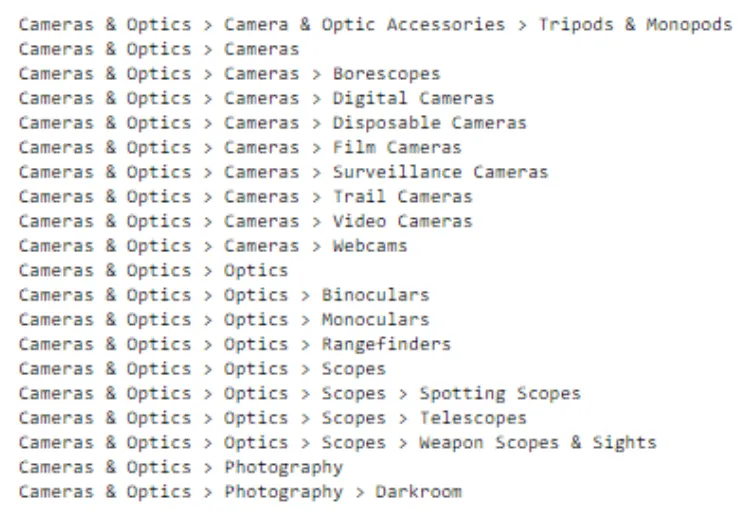
Advanced Features to Improve Your Feed
You’ve already got our expert tips for Google Shopping feed optimization and boost performance. Now, let’s take it a step further. By leveraging advanced features, you can gain a bigger competitive edge:
- Custom labels for smarter campaign targeting;
- Include additional product attributes for better ad performance;
- Correct MPNs to enhance search relevance.
We’ll break down each strategy that can elevate your feed.
1. Custom labels for strategic campaign targeting
Custom labels are a powerful tool to optimize your advertising strategy. They help you:
- Focus resources where they’re needed.
- Promote seasonal bestsellers.
- Clear out last season’s inventory.
- Showcase new arrivals with great margins.
You can create up to 5 custom labels in your product data, numbered 0 to 4. Each label should have a clear definition and specific values, which you can consistently apply to products in your Merchant Center account. Remember, each product can only have one value per label.
How to create and implement custom labels:
1. Defining custom labels
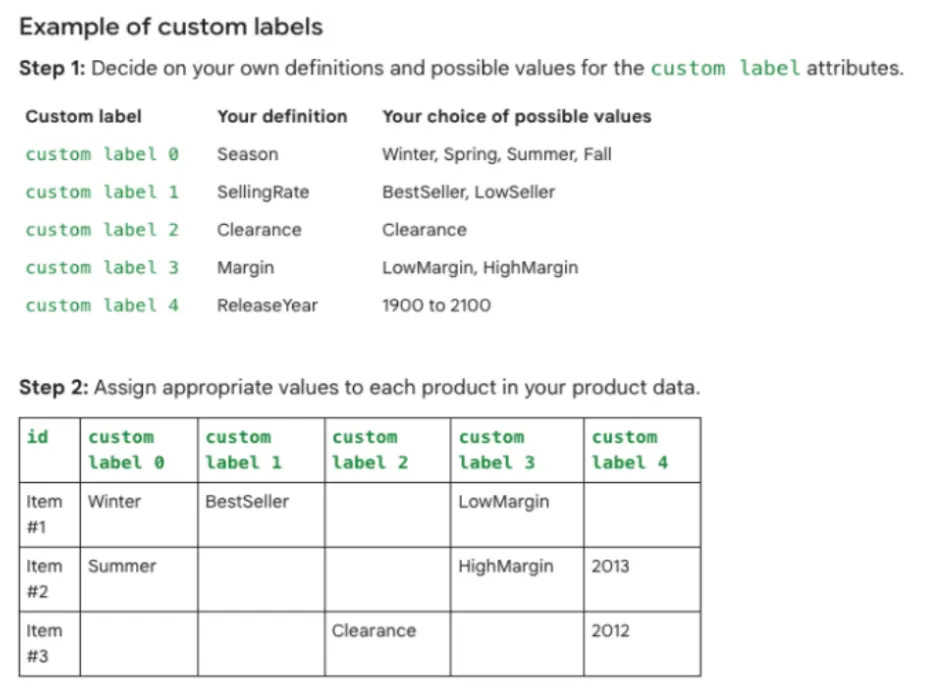
Defining your custom labels is like laying a strong foundation. You should make sure each label is clear and aligns with your campaign goals, like ‘Season’, ‘Margin’, or ‘ReleaseYear’.
What’s more, consistency across your product range is vital for effective management and performance analysis. Think of your labels as a library system and try to keep your definitions documented in an accessible format, like a spreadsheet.
2. Assigning values to products
After defining your labels, assign specific values to your products.
For example, under a ‘season’ label, categorize items as ‘Spring’, ‘Summer’, ‘Autumn’, or ‘Winter’. Not every product will fit each label, and that’s okay. Just focus on meaningful assignments that support your goals.
3. Integrating custom labels into your product feed
Once your labels and values are defined, integrate them into your product feed. This step bridges your planning and the marketplace where your products compete.
Go to your data feed management tools or set up feed rules in Google Merchant Center to automate label assignments based on your product data.
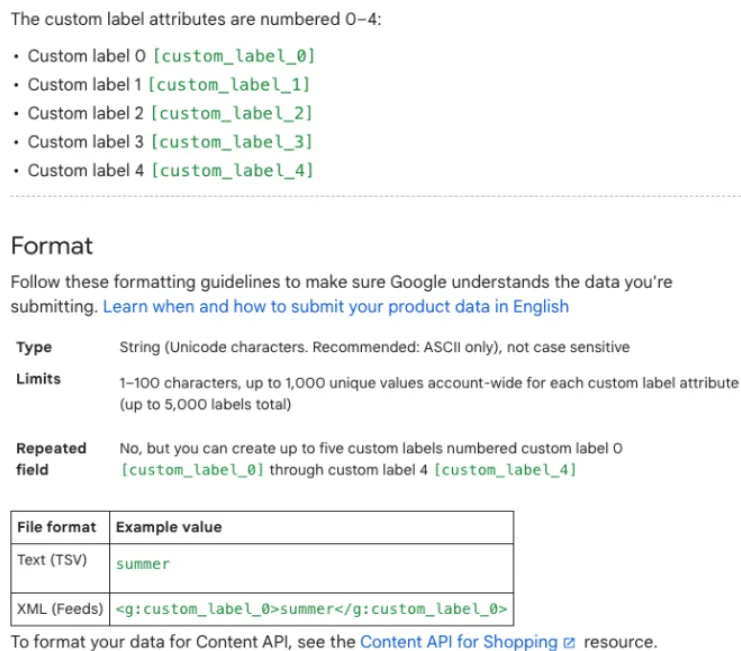
2. Include additional product attributes for better ad performance
When customers shop, they often search for specific details. By including specific attributes in your feed, you help Google show your products to the right people. When someone types in “blue sneakers size 9,” your product is more likely to appear as you’ve added those exact details.
Benefits of additional product attributes for enhanced ad performance:
- Targeted campaigns: With specific attributes, you can create more focused ad campaigns that reach the right audience.
- Dynamic remarketing: You can utilize attributes for dynamic remarketing to re-engage customers by showcasing products they’ve shown interest in, or similar options, increasing your chances of conversion.
- Data-driven insights: Analyze which attributes (such as organic materials or certain sizes) resonate most with your customers. So that you can refine your advertising strategies and optimize inventory, focusing on what truly drives sales.
How to use them for Google Shopping feed optimization:
- Be accurate: Always include the correct size, color, material, or any other detail.
- Use clear descriptions: Instead of generic terms, be specific. If your product comes in “Navy Blue,” list it as that, not just “Blue.”
- Combine attributes: For complex items like clothing or jewelry, combine multiple attributes. For instance, “Gold bracelet, adjustable size” tells the customer everything they need in one go.
3. Add correct MPNs to improve search relevance
Adding the correct MPNs (Manufacturer Part Numbers) to your product feed can make a big difference in helping customers find exactly what they’re looking for. If you’re unaware, MPNs are unique codes assigned by manufacturers to identify products, and when they’re accurate in your listings, they increase your product’s chances of being found in relevant searches.
In detail, MPNs make your products easier to find, especially for shoppers who are searching for a specific item. If someone knows the exact part number they want, having the correct MPN in your feed helps Google match your product to their search. As a result, it can improve your chances of appearing in relevant search results and standing out from competitors.
How to optimize Google Shopping feed with MPNs:
- Accuracy is key: Make sure the MPN you add matches the one assigned by the manufacturer.
- Consistency across platforms: Use the same MPN across all your product listings to maintain consistency and improve your visibility.
- Better customer comparison: Correct MPNs allow shoppers to easily compare your product with similar ones, ensuring they find the best match.
How to Measure the Impact of Product Feed Optimization
“If you can’t measure it, you can’t improve it.” To optimize your product feed effectively, measurement is key.
Now, first, look at essential metrics to track your Google Shopping feed optimization.
1. Key metrics to track your feed performance
Performance metrics are your compass in the product feed optimization process.
These metrics include:
- Clicks
- Impressions
- Click-through rate (CTR)
- Conversions
- Conversion rate
- Conversion value
They offer crucial insights into how well your feed is performing. For example, a high CTR signals strong audience engagement, boosting traffic and potential conversions.
2. Tools & reports in Google Merchant Center & Google Ads
#1. Google Merchant Center
Google Merchant Center equips you with abundant resources to validate your product feed against all necessary requirements and help you streamline Google Shopping feed optimization:
- Diagnostics tool: This tool is necessary for assessing the health of your product feed. It identifies issues such as disapproved products, policy violations, and data quality problems.
- Product performance reports: You can gain insights into how individual products are performing in terms of impressions, clicks, and conversions, then analyze them to determine which products benefit from optimization efforts and which ones require further attention.
- Feed rules: Feed rules allow retailers to modify their product feed directly within Merchant Center. This feature enables quick changes to product attributes, such as titles and descriptions, without needing to resubmit the entire feed.
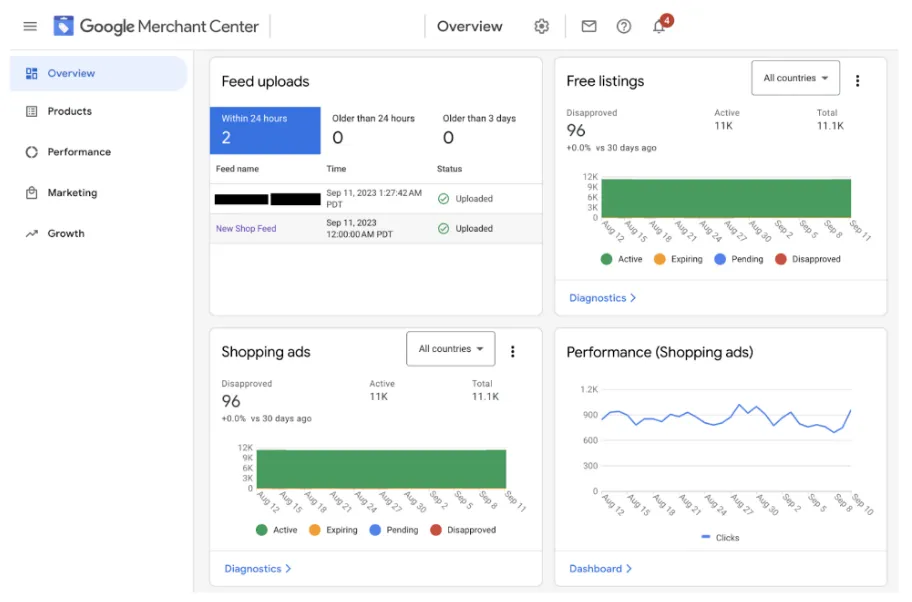
#2. Google Ads
Google Ads, on the other hand, offers a comprehensive suite of tools for tracking and measuring ad performance, enabling you to optimize your campaigns:
- Campaign performance reports: Within Google Ads, campaign performance reports provide a comprehensive view of how optimized product feeds affect ad performance.
- Auction insights: This tool offers comparative insights into how your ads perform against competitors. If your optimized feed leads to higher ad positions or lower CPC, it signals successful optimization.
- Attribution reporting: Attribution reports in Google Ads allow businesses to understand the customer journey and how different products contribute to conversions.
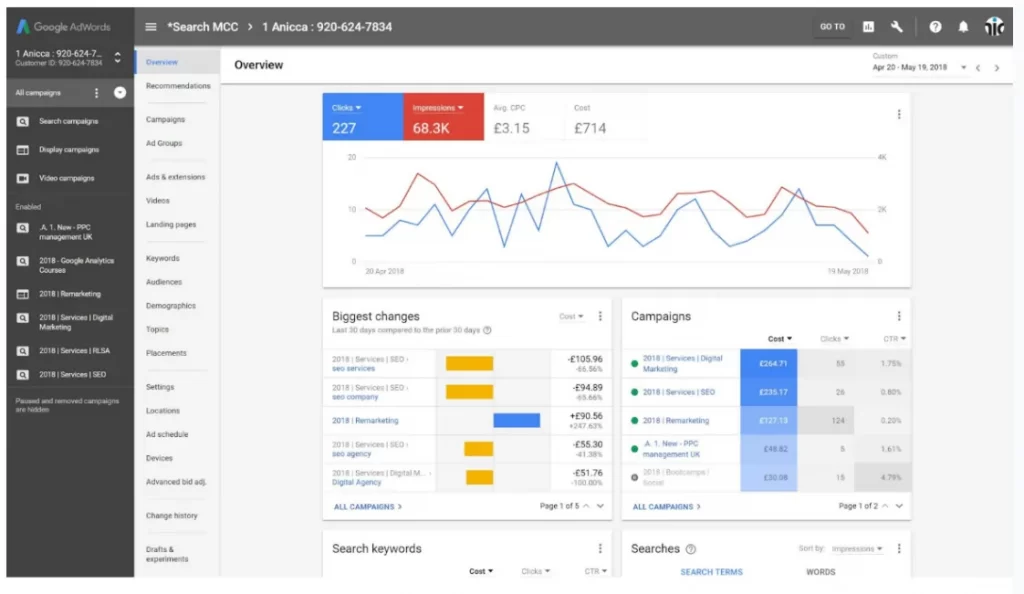
Google Shopping Feed Optimization – FAQs
Product feed optimization is the process of refining and improving the information in your Google product data feed to ensure that it meets the requirements and best practices for Google Shopping. Regular updates! Keeping your feed fresh and accurate ensures that your ads remain relevant and avoids mismatches that could harm user experience. Tools like Google Merchant Center, feed management software, and Google Ads can offer valuable insights and automation options to manage and optimize large product catalogs. To effectively SEO Google Shopping, start by optimizing your product feed to ensure accurate and relevant data. Next, craft engaging product titles that incorporate keywords to attract potential buyers. Also, write compelling product descriptions that highlight key features and benefits. Don’t forget to group products accurately to improve search visibility, and finally, choose the correct product type to enhance your listings’ relevance in search results.
Mastering Google Shopping Feed Optimization for Success!
Google Shopping feed optimization is definitely key to boosting sales and your profits! You’ve walked through the Google Shopping feed best practices we’ve provided, which will help you stay ahead of the competition.
Additionally, to keep up with the latest trends and insights in the eCommerce industry, check out the blog created by LitCommerce. This resource offers a wealth of valuable information that you can use to enhance your business strategies.
We hope this guide proves useful for running a successful Google Shopping campaign. If you have any questions or suggestions, feel free to reach out, we’re here to help.

